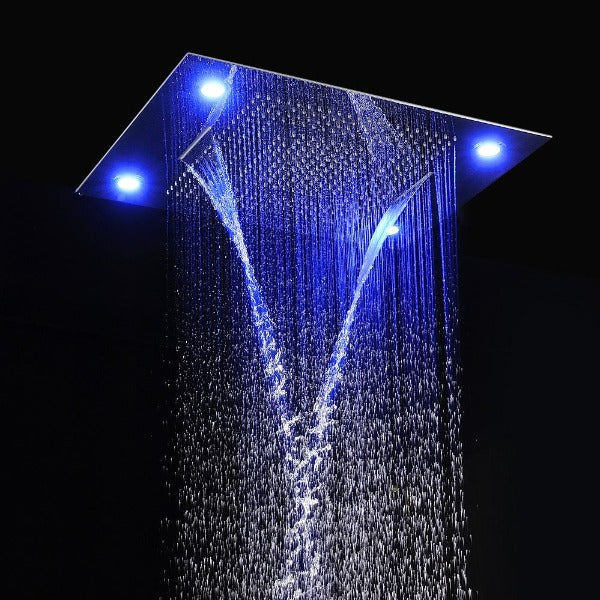The Ultimate Relaxation: Rain Head Shower Systems
Imagine stepping into your shower and feeling a gentle cascade of warm water falling from above, mimicking the soothing sensation of a natural rain shower. This luxurious experience is made possible by rain head shower systems, a modern bathroom fixture that has gained immense popularity in recent years. In this article, we will explore the world of rainhead shower systems, their benefits, installation, and how they can transform your daily bathing routine into a spa-like retreat.
What is a Rain Head Shower System?
A rain head shower system, also known as a rain shower or rainforest shower, is a type of shower fixture designed to replicate the sensation of standing beneath a gentle, natural rain shower. Unlike traditional wall-mounted showerheads, rain heads are typically installed in the ceiling or a dedicated overhead fixture, allowing water to fall directly from above. The design of these systems focuses on providing a wide and even distribution of water, which creates a luxurious and immersive bathing experience.
Benefits of Rain Head Shower Systems
Luxurious Shower Experience: The primary benefit of a rainhead shower system is the luxurious experience it offers. The gentle rain-like flow of water provides a soothing and calming sensation, making each shower feel like a spa retreat.
Even Water Distribution: Rain heads are designed to provide an even distribution of water across your entire body. This ensures that every part of your body receives an equal and thorough rinse, enhancing your overall cleansing experience.

Aesthetic Appeal: Rainhead shower systems are not only functional but also aesthetically pleasing. Their modern and minimalist design can elevate the look and feel of your bathroom, creating a spa-like ambiance.
Stress Reduction: The gentle flow of water from a rainhead can have a calming effect on your mind and body. It can help reduce stress, ease tension, and promote relaxation during your daily shower.
Customization Options: Rainhead shower systems come in various sizes, shapes, and finishes, allowing you to choose one that complements your bathroom's style and meets your specific preferences.
Installation Considerations
Installing a rainhead shower system may require professional plumbing and electrical work, depending on your bathroom's existing configuration. Here are some key installation considerations:
Plumbing: Ensure that your bathroom's plumbing can accommodate the additional water flow and pressure required for a rainhead shower system. Upgrading your plumbing may be necessary in some cases.
Ceiling Space: If you plan to install a ceiling-mounted rain head, consider the available space and structural support in your ceiling. Consult with a professional to ensure proper installation.
Water Supply: Verify that your water heater can provide an adequate supply of hot water for your rainhead shower system. A larger water heater may be needed to meet the increased demand.
Electrical Requirements: Some rainhead shower systems feature built-in LED lighting or digital controls, which may require electrical connections. Ensure that these electrical components are installed safely and compliant with local building codes.
Rainhead shower systems offer a luxurious and invigorating bathing experience that can transform your daily routine into a spa-like retreat. With even water distribution, aesthetic appeal, and stress-reducing benefits, they are an excellent addition to any bathroom. However, it's essential to consider installation requirements carefully and consult with professionals if necessary to ensure a safe and functional setup. If you're looking to elevate your bathroom experience and indulge in the ultimate relaxation, a rainhead shower system may be just what you need.
For More Info:-

Comments
Post a Comment